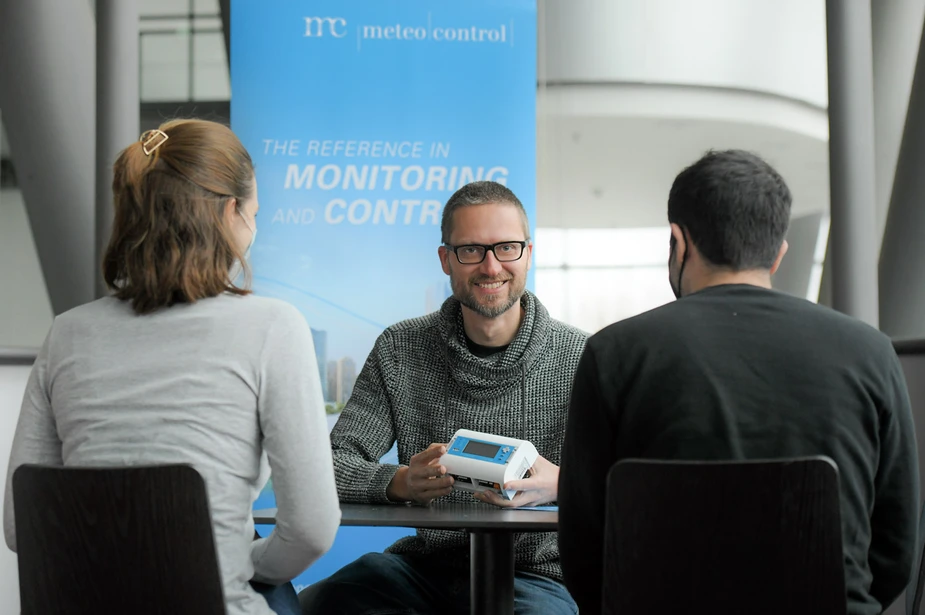Steering 50.000 photovoltaics systems
A new arrival in Adlershof: The innovation for digital power plants created by meteocontrol are in high demand worldwide
Weather changes, and so do energy yields made from sun, wind or water. Ensuring a reliable supply requires flexible systems that are capable of pooling, storing, and releasing electricity from multiple sources. As a specialist for renewable energy, meteocontrol GmbH provides the systems for monitoring and controlling such systems.
Founded in Augsburg 40 years ago, the company already had 12 locations all over the world, when it opened its Berlin branch in June 2021. “Adlershof been experienced in renewable energy, particularly solar, for a long time,” says chief technical officer (CTO), Stijn Stevens. Hailing from Belgium, he studied aerospace technology KU Leuven and completed a PhD in energy technology. He then started a career in renewable energy. At the Kassel-based SMA Solar Technology AG, the engineer advanced to “business unit system architect” in seven years, before skytron energy, a photovoltaics specialist, lured him to Berlin in 2017.
He is now using the inspiration that comes from being so close to leading-edge research in Technology Park Adlershof for his new company, meteocontrol, which has grown strongly in the past couple of years. “In total, the plants we monitor put out 21 gigawatts (billion watts) of electrical power,” says Stevens. Worldwide, meteocontrol oversees 50,000 photovoltaic facilities. Their primary characteristics are identified using artificial intelligence: What are the factors that affect electricity generation and to what extent? From these data, models are created, which improve yields and are used to better plan future plants.
These plants will not be limited to photovoltaics. Stevens sees the future in hybrid power plants that generate renewable energy from various sources and use it for generating electricity, heat, or fuels like hydrogen and methane. “meteocontrol offers specific solutions,” says Stevens. “They include data capturing and intelligent controlling of generation and consumption, control of grid requirements, systems maintenance, and energy trading.”
The data captured in the cloud and technical analyses facilitate targeted solutions either for individual plants or larger portfolios. “When something goes wrong, the software steps in and reports a specific problem. Maintenance and repairs can go underway,” explains Stevens. The company is currently focusing on commercial and industrial plants as well as large power plants with 200 to 500 megawatts.
With the order books full and expecting even higher demand, finding new staff is becoming a more pressing issue. Since they opened in Adlershof this past summer, five new colleagues joined the company, two more will follow in March of next year. But there is a greater need for staff, including energy technology engineers, software developers, chip programmers, control engineers, and power plant designers.
“We have two years behind us during which broke all records,” says Stevens. To keep up this speed, he will intensify the search for new staff, build contacts to students, promote and support research projects. Berlin, and especially Adlershof, with its businesses, universities, and many research facilities from the energy sector is exactly the right place to do so. Stijn Steven’s family and his three children are happy in Berlin. His eco-garden, too, is something he wouldn’t want to do without anymore.
Dr. Paul Janositz for Adlershof Journal
